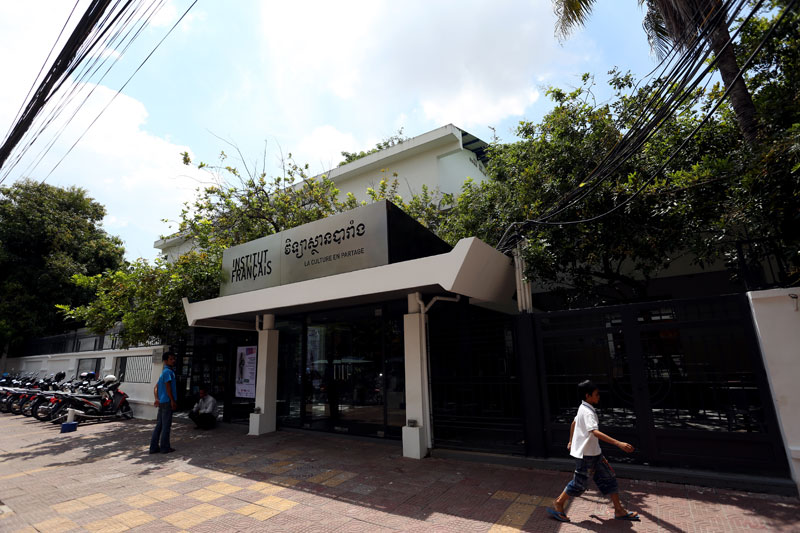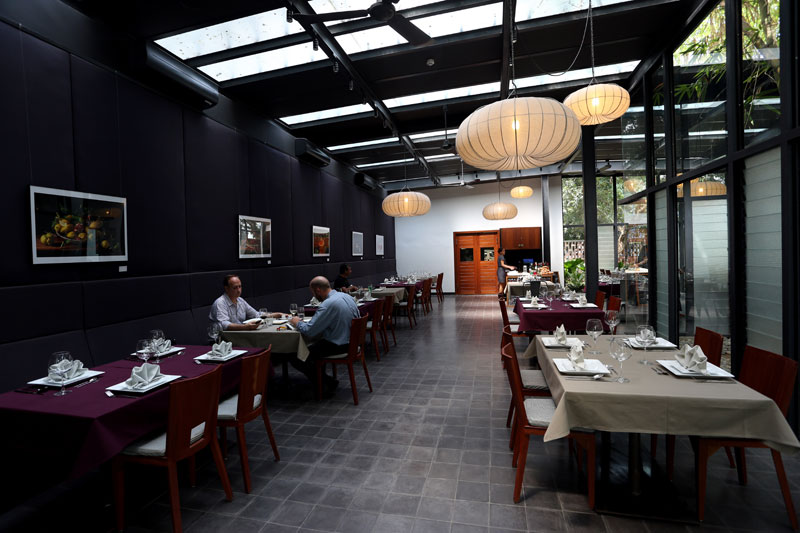In the heyday of Indochina prior to World War II, France’s colonial policy in Cambodia, Laos and Vietnam included a “mission civilisatrice,” or civilizing mission.
Cambodia had the good fortune that Frenchmen such as George Groslier, Adhemard Leclere and members of the research institute Ecole francaise d’Extreme-Orient interpreted this as both bringing in French knowledge and technological advances, and helping Cambodians research and develop their arts and culture.

While this “mission” has faded away along with its colonial empire, France has continued what could be called cultural diplomacy, that is, using French culture in all its forms—from culinary to performing and visual arts—as a way to promote France and develop international relations.
The French Cultural Center, now called the Institut Francais, opened its doors in the early 1990s and has since been a cornerstone of this policy—initiating Cambodians to the best of French culture while supporting Cambodian artists as they forge ahead in defining this country’s cultural identity.
But its plans were abruptly disrupted in the late 2000s when the French government’s first budget cuts were applied to staggering effect over the next few years.
Today, the Institut Francais’ budget is about a quarter of what it was in 2010, which has translated into severe cuts in its cultural activities.
In the absence of a Cambodian-government arts development policy or a contemporary arts museum, the Institut Francais has offered artists in every field—from circus artists to actors, dancers, musicians and visual artists—outlets to develop and produce their work. Any drop in its activities is deeply felt among the country’s artists.
In November 2004, the institute’s organizers had brought to Phnom Penh more than 200 Cambodian circus artists, making Cambodians and foreigners aware that the form was part of the country’s tradition. The week-long festival Tini Tinou, or “here and there,” also included French circus artists and attracted thousands of visitors.
By 2007, however, the Institut Francais could no longer afford to hold the event and turned it over to the organization Phare Ponleu Selpak in Battambang city, which runs a circus school. But this proved too taxing on Phare’s resources and the festival disappeared in 2010. In the meantime, enrollment at the National Circus School in Phnom Penh has dropped to two students this year, with the lack of opportunities to perform discouraging young Cambodians from pursuing that career.
The other major loss has been the “Lakhaon” theater festival. An annual event since 2007, it usually involved a renowned French director who staged either a French classic such as Moliere’s “The Miser” or a Cambodian work. The shows were staged with Cambodian actors and presented in Khmer with French and English subtitles. During the last festival in 2012, a French writer-director of Cambodian parentage, Jean-Baptiste Phou, staged a four-character play featuring Cambodian actress Dy Saveth and set in the waiting room of the Cambodian Embassy in Paris.

The festival included Cambodian companies and was a showcase for those from the provinces, said Olivier Planchon, the French Embassy’s cultural attaché and the institute’s deputy director. “There are many of them and they rarely perform in Phnom Penh,” he said. Efforts were made throughout the years to present the 26 forms of Cambodian theater, putting an emphasis on those that had hardly ever been produced, he added.
Since the last “Lakhaon” two years ago, Cambodian theater has virtually gone dark in Phnom Penh, as such event requires not only funds but also the technical know-how of the Institut Francais’ French and Cambodian teams.
Over the last two decades, the Institut Francais’ role and budgets worldwide have altered according to economic constraints but also due to changes in French governments and senior public servants, with some seeing support to the arts in developing countries as essential as assistance to rural development or education, while others have viewed the institute’s role strictly as a public relations entity promoting French culture.
This has led to budget cuts at the institutes throughout the world.
“But in Cambodia, we have been especially affected because the budget had been so high,” Mr. Planchon noted. “We had been favored with grants much bigger than elsewhere. This was the legacy of the 1990s, the years…during which France as well as other countries had invested heavily to help rebuild the country in all fields and [in the case of France] in the cultural sector.”
Today, the institute’s funding for cultural programs is minimal.
But even amid the cuts, due to French government accounting, there remained last year funding available for “investment” in Cambodia. That money could not be carried into cultural programs, said Romain Louvet, cooperation and cultural program advisor at the French Embassy in Phnom Penh and the institute’s director. With something of an eye to loopholes, the institute spent the funds on an extensive renovation program that has transformed the Institut Francais’ buildings on Street 184, enclosing the ground-floor hall on one side of the street, and adding a glass-cube reception area plus an outdoor bistro and an indoor restaurant on the other.
“Since we had ‘reserves’ available, it seemed appropriate to get involved in a building program that would demonstrate the Institut Français’ wish to be in line with the time,” Mr. Louvet said.
The institute had been at that same location since the early 1990s with no renovation done for a number of years. And if this week was any indication, students who gravitate around the institute appreciate its new features: They enjoy the garden seating areas along the library and take advantage of the air-conditioned exhibition hall in the midday heat.
Finding themselves with next to no budget for cultural programs, the institute has instead tried to come up with a strategy to generate funds, well aware that it will take years—if ever—before it can operate at the early 2000s levels.
One major element of this tactic has been to open a French restaurant. Set up during the building makeover, Le Bistro is now operated by the institute in partnership with Le Votre—a French catering service specializing in supplies for restaurants. Its goal is to attract a Cambodian as well as Western clientele; its menu at this point is classic French cuisine, restaurant Manager Anthony Hervoche said. “It’s French culture through its cuisine.”

The Institut Francais also hopes the number of students taking French-language lessons will increase. There currently are 5,000 students enrolled in Phnom Penh and at the institute’s annexes in Battambang City and Siem Reap City.
Another way for the institute to continue activities with little or no budget has been to take advantage of touring events that the French government organizes each year as part of its “cultural diplomacy,” which are funded out of a budget separate from that of the Institut Francais.
The institute’s current exhibition, Arts and Food, featuring photos on the theme of food is one such event.
The dance performance presented Wednesday night by French director Fabrice Planquette of the A.Lter S.Essio company, was another. This performance enabled the institute to stage a Cambodian production—Chumvan Sodhachivy’s dance “Alphabet”—in the same show, Mr. Planchon said. In the same way, the concert of the French rock band Dissonant Nation Thursday night at Chenla Theater will also feature the Cambodian rock band Cartoon Emo.
When the Institut Francais celebrated its 20th anniversary two years ago, 20 of the country’s foremost painters and photographers—such as Sopheap Pich, Mak Remissa, Sre Bandaul, Meas Sokhorn, Chhim Sothy and Em Riem—donated artworks for a silent auction to benefit colleagues in financial difficulties. Some of these artists whose works sold for thousands of dollars had agreed to this because the Institut Francais was asking.
“Since its opening, the institute has tremendously supported Cambodian artists,” painter Chhim Sothy explained at the time. “It may have been called ‘French’ Cultural Center, but it was not French but Cambodian artists who were encouraged and exhibited there.”




